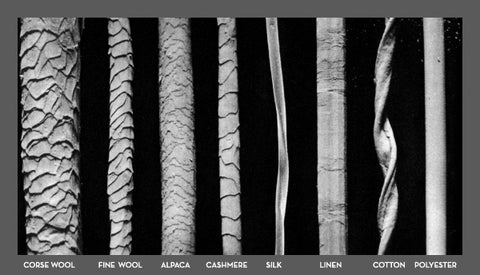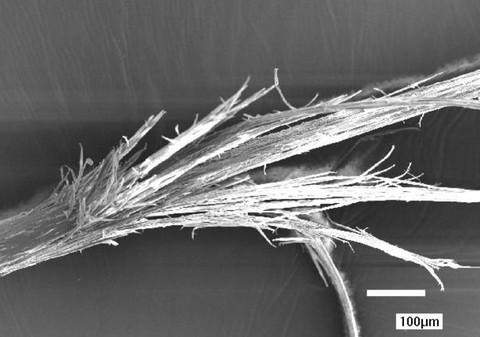If you were a child any time before the 1990s your memories of wearing wool might be similar to mine. Some of my earliest recollections of winters in Norway, where I grew up, involve me barreled up in wool base layers to keep me warm while I played outside.
The wool of my childhood was course and scratchy and left me feeling itchy and red and generally irritated when I wore it – having it so close to my skin, which it had to be for it to do its job, felt more like a punishment than my parents’ loving effort to keep me warm and dry (hair shirt, anyone?).
If this sounds like a familiar experience, and you have never encountered Fine Merino Wool, then it would be fair to wonder if soft wool, that you’d actually want to have close to your skin, is the stuff of mermaids and unicorns. But I can say, soft wool is very real. (I’m still working on the actuality of mermaids and unicorns.)
Have a look at these wool fibers under a microscope:

As you can see, a regular wool regular fiber, the stuff our clothes used to be made of when we were kids, is much larger than, and has a different structural composition than, Fine Merino wool fibers (if you want more information on this check out our blog post The difference between soft and scratchy wool I did a few years ago).
When the fleece is shorn from the sheep it is washed in an acid bath to ensure the lanolin bonds with the wool fibers. Sheep produce lanolin to coat their fleece not only to keep them dry but the lanolin also acts as an antibacterial to keep the sheep clean. Before the fleece becomes your sweater, the lanolin regulates the sheep’s’ temperature (and Merino sheep do experience extreme climates - scorching summers and wet cold winters in the pastures of Australia and New Zealand) and we want the lanolin to stay put so we can take full advantage of the properties of it, just like the sheep who had it on before us.
Now take a look at this picture of a human hair next to a Fine Merino Wool fiber. Wool fibers are not completely unlike human hair fibers and share some similar structural proteins like keratin. What’s interesting is that a Fine Merino Wool fiber (top) is actually finer than a human hair fiber (beneath).


So, if you can imagine a similar thing happening to wool you can possibly see why the much larger fibers of regular wool end up being much scratchier than the much finer Merino Wool Fibers. When regular wool break and bristles it means lots of big, and now scratchy, fibers against your skin. The much softer Fine Merino Wool does not have such an extreme effect.
I wish we knew about this kind of wool when I was a kid back in Norway, it would've made my childhood very much softer!
Check out our very soft new baby and kids base layer collection!



